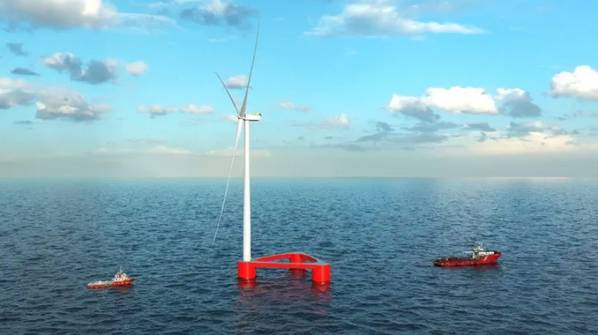
DNV, the independent energy expert and assurance provider, has been selected by Equinor to provide verification services for Front End Engineering and Design (FEED) of the substation of the Bandibuli / Firefly floating wind farm.
The wind farm comprises two 75 km2 areas, 70 km offshore Ulsan in South Korea. DNV will leverage its verification services and expertise within offshore substations and floating structures to ensure the reliability and efficiency of this project.
This includes independent assessment and validation of standards basis, design requirements and specifications with a focus on optimizing performance and minimizing risks.
To remind, Equinor has in 2022 awarded a contract to COWI to serve as 'Owner’s Engineer' for the Firefly floating wind project offshore Ulsan in South Korea.
The 800 MW project will be developed using a low draft semi-submersible floating concept called Wind Semi, and the first power is expected in 2027.
“Equinor’s Bandibuli / Firefly project is at the forefront of driving innovation in floating wind farms, and DNV is proud to contribute its expertise to ensure the success of this groundbreaking endeavor.
“South Korea holds some demanding conditions like typhoons which need to be considered in the design. We aim to help Equinor enhance stakeholder confidence, mitigate risks, and ensure that the Bandibuli / Firefly project meets the highest industry standards,” said Brice Le Gallo, Vice President & Regional Director APAC for Energy Systems at DNV.
With a focus on closing gaps in existing technology and standards applicable to floating substations, DNV has initiated a Joint Industry Project (JIP). The collaborative industry effort has brought together 38 participating companies, including Equinor, to tackle the distinctive challenges associated with floating offshore substations.
Results and insights from the JIP will benefit the design verification of this project. In addition, DNV will take JIP results and learnings from testing the gained expertise on a specific project into the update of its standard for offshore substations (DNV-ST-0145) to include floating substations.
South Korea’s offshore wind policy is gaining momentum as the country actively pursues cleaner energy sources.
As part of its Green New Deal, South Korea aims to generate 20% of its power from renewables by 2030 and between 30-35% by 2040. The specific target for offshore wind capacity stands at 14.3 GW.